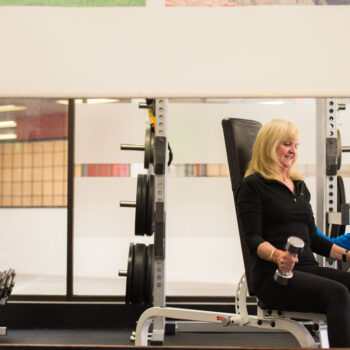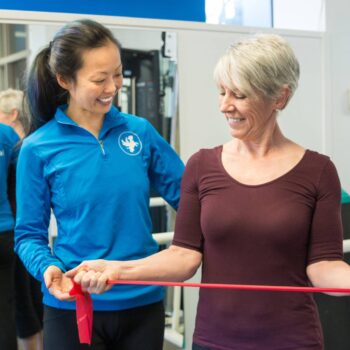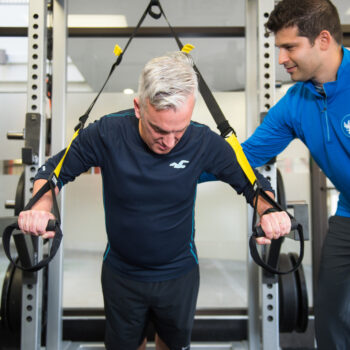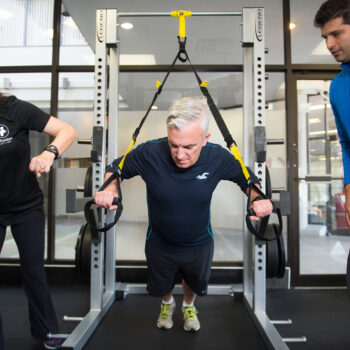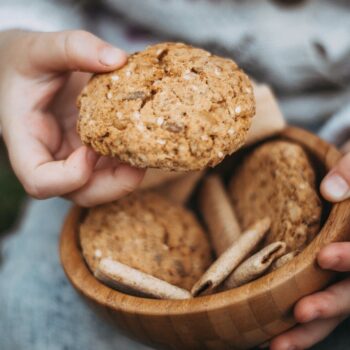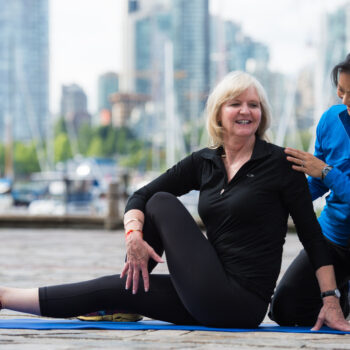By Gillian Morrow
This week has been a pivotal moment in my life. I am now eligible for a seniors’ discount at a well-known drugstore. Having worked in the fitness and health field for a few decades and continuing my studies, it is of great interest to me the way our physiology progresses as we age.
Our life history we carry in our bodies, and as we progress we will occasionally have setbacks in our level of health and well-being. Sometimes these incidents impact how we continue forward. If you have ever had acute pain you may be more guarded about the area of injury and may have moments of apprehension (2). Take a look at some older adults who have suffered an injury or a fall. Their stance becomes wider, their strides shorter, and their gaze moves downward to the immediate area in front of them (1). This change can have consequences on the muscle balance and posture, which in turn can affect daily activities and the ability to exercise. Chronic pain can also become a symptom that can alter the body’s ability to function well.
We know through reports, articles, and news, the importance of resistance training to maintain healthy muscles and bones, and cardiovascular fitness to maintain a high quality of life as we age. But, there are some other factors that benefit from activities that are extremely important as well. Balance, range of motion, and reaction times are some of the things that we tend to overlook and underestimate, but are key to reducing the incidence of injuries and falls (3)(4).
Balance
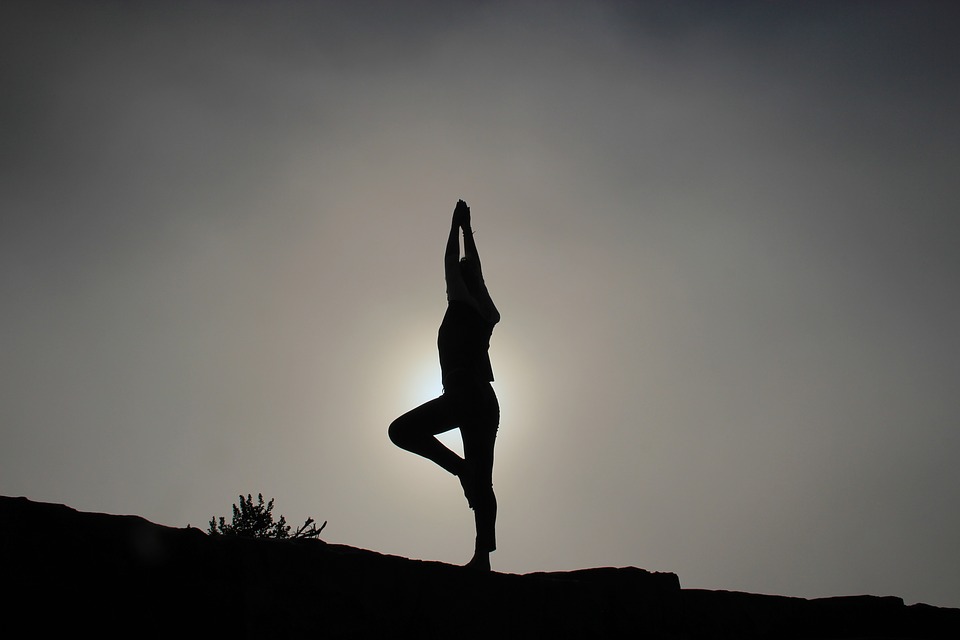
Balance is our ability to transfer weight from one body part to another with an awareness of where our bodies are in the space of our environment. As we age, we may find ourselves altering our stance, use external equipment to assist us, or stop participating in activities that challenge us. Balance training does not need to include things like stability balls or Bosu equipment. The ability to stand on one leg or to walk an imaginary tightrope are balance exercises. Moving forwards, backwards, side to side, and on a diagonal all need balance and a sense of where you are in space. Having strong core muscles assist in our ability to balance.
Balance can be challenged sitting, standing, kneeling, lunging, squatting, reducing our base of support, bending over, etc. Our balance can be tested by closing our eyes as we move. It is important when training balance that the area is safe and free of obstacles. Training balance also gives you a better awareness of your body and how your body parts move (5). These movements are a great transition for many activities such as Tai Chi, dancing, hiking, or water skiing.
Range of Motion

Use it or lose it! Active range of motion is extremely important to maintain healthy joints and muscles (6). The ability to reach for an object or step over an obstacle seem like simple tasks but if we do not use these movements efficiently, we can find ourselves thwarted in reaching our goal (7).
When getting ready to do physical activity or before a workout you may want to do some dynamic movements to prepare the joints and muscles for the task. These are not extreme motions but a gentle way to move your body. Leg or arm swings, torso rotations, and chest openings are a few of the actions you can take. At the end of the activity you can do your gentle static stretching, holding a position for 15 to 30 seconds. It is not recommended to do so before your workout as this can reduce the power output of your muscles (8). Stretching exercises to maintain range of motion should be done three to five times a week. To increase range of motion, you should do stretching exercises daily!
Reaction Time

Reaction time is another fitness component that can deteriorate as we age. The ability to make quick changes in movement or to catch a falling object (or yourself!) can truly impact activities and health status (9).
Reaction time can be challenged “zooming in” or “zooming out” from a specific area of your body to your body as a whole. For example, some card games or video games are a great way to start. Taking the challenge further out you can play ping-pong, badminton, pickle ball, take up dancing or sports that requires changes of direction. As with balance, it is important to be aware of your surroundings to be able to train safely.
These components of fitness and well-being are important and can be fun to train. As with any type of activity you start focusing on, keep it interesting and stay positive. We may slow down as we age, but the best news is that we can do something about the rate at which this happens (10). I will take that seniors’ discount, but I will be striding long with head held high to get it!
References
- Kerrigan DC, Lee LW, Collins JJ, Riley PO, Lipsitz LA. Reduced hip extension during walking: healthy elderly and fallers versus young adults. Arch Phys Med Rehabil. 2001;82:26–30.
- MasudT., Morris R.O. Epidemiology of falls. Age and ageing 2001; 30 Suppl 4:3-7
- Cunningham DA, Paterson DH, Himann JE, Rechnitzer PA. Determinants of independence in the elderly. Canadian Journal of Applied Physiology. 1993;18(3):243–254.
- Piercy KL, Troiano RP. Physical Activity Guidelines for Americans From the US Department of Health and Human Services. Circulation Cardiovascular quality and outcomes 2018; 11(11): e005263
- In-Hee Lee, PT, PhD and Sang-young Park, PT, PhD Balance Improvement by Strength Training for the Elderly. J Phys Ther Sci 2013 Dec; 25(12): 1591-1593
- Frekany C, Leslie D: Effects of an exercise program on selected flexibility measurements of senior citizens. Gerontologist 15: 182-1 83, 1975
- Morini S, Bassi A, Cerulli C, Marinozzi A, Ripani M. Hip and knee joints flexibility in young and elderly people: effect of physical activity in the elderly. Biology of Sport. 2004;21(1):25–37
- Yamaguchi T, Ishii K, Yamanaka M, Yasuda K Acute effect of static stretching on power output during concentric dynamic constant external resistance leg extension. J Strength Cond Res. 2006 Nov;20(4):804-10
- Rudisill ME, Toole T The effects of a physical activity program on reaction time and movement time for the older adult. Journal of Human Movement Studies, 22 (1992), pp. 205-212
- Lord SR, Caplan G, Ward JA Balance, reaction time and muscle strength in exercising and non-exercising women: A pilot study Archives of Physical Medicine and Rehabilitation,74 (1993), pp. 837-840

Gillian began her fitness journey over twenty years ago in Europe as a fitness instructor where she combined her love of music and movement. Passionate about health and wellness, her studies have included certifications in Pilates, Muscle Activation Techniques, athletic therapy and rehabilitation, allowing her to help her clients in finding their own path towards leading healthy lifestyles.


